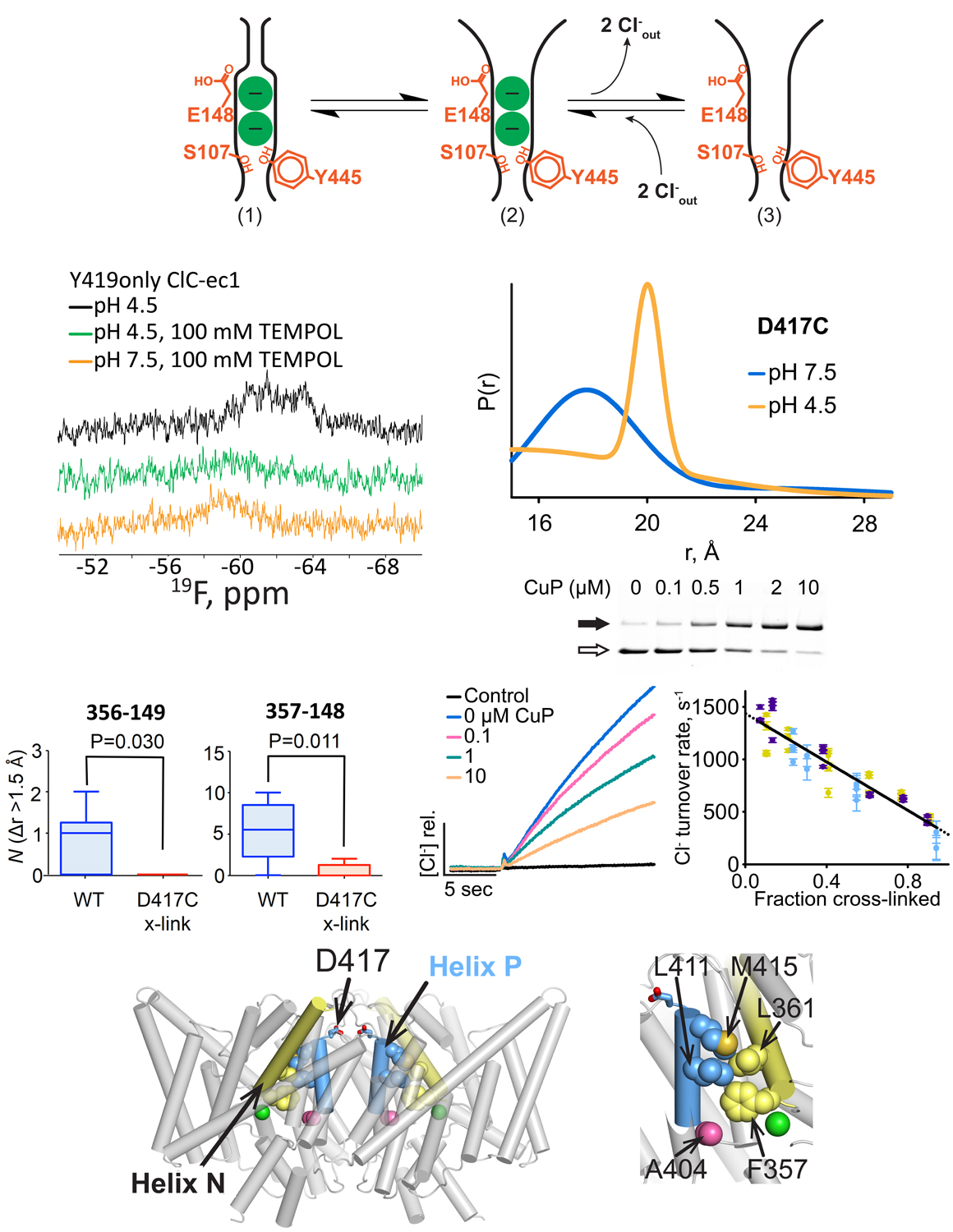Revealing an outward-facing open conformational state in a CLC Cl-/H+ exchange transporter
By Chandra M Khantwal, Sherwin J Abraham, Wei Han, Tao Jiang, Tanmay S Chavan, Ricky C Cheng, Shelley M Elvington, Corey W Liu, Irimpan I Mathews, Richard A Stein, Hassane S Mchaourab, Emad Tajkhorshid, and Merritt Maduke.
Published in Elife. 2016 Jan 22;5. [Epub ahead of print]. PMID: 26799336. PMCID: 4898471. Link to Pubmed page.
Project: The Transport Cycle in Neurotransmitter Uptake Systems. Core Facility: Synthetic Antigen Binder (SAB) Generation and Crystallography.

Abstract
CLC secondary active transporters exchange Cl- for H+. Crystal structures have suggested that the conformational change from occluded to outward-facing states is unusually simple, involving only the rotation of a conserved glutamate (Gluex) upon its protonation. Using 19F NMR, we show that as [H+] is increased to protonate Gluex and enrich the outward-facing state, a residue ~20 Å away from Gluex, near the subunit interface, moves from buried to solvent-exposed. Consistent with functional relevance of this motion, constriction via inter-subunit cross-linking reduces transport. Molecular dynamics simulations indicate that the cross-link dampens extracellular gate-opening motions. In support of this model, mutations that decrease steric contact between Helix N (part of the extracellular gate) and Helix P (at the subunit interface) remove the inhibitory effect of the cross-link. Together, these results demonstrate the formation of a previously uncharacterized ‘outward-facing open’ state, and highlight the relevance of global structural changes in CLC function.


